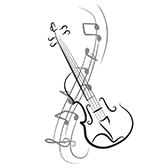Teaching Method

My first violin teacher often said to me: “The best violin teacher is someone who can show his or her students how to teach themselves.”
As a young violinist this comment always left me somewhat perplexed.
My thought was: “Why doesn’t she just give me clear instructions and show me the necessary steps to solve a particular problem?”
Of course there are certain basics in violin playing which you have to convey to the student. But many technical solutions have to be tailored to the physicality and personality of the student.
Many people love methods for violin playing which gives you exact instructions how to take every step in your development as a violinist.
Some of the most famous examples are the violin methods by Carl Flesch and Ivan Galamian.
Both methods contain fantastic ideas. But the best way to deal with them is to try out their instructions in a critical way. Some ideas might work for you, some not. Sometimes certain instructions might just point you in the right direction.
Often violin methods are ways of learning the instrument, that are actually tailored to the author and are then promoted to be an objective truth.
The ideas of Flesch and Galamian are partially based on years of teaching experience, but will often remain highly personal.
I myself studied for a while with Max Rostal and his assistant. Rostal himself was a student of Carl Flesch and was highly regarded as a teacher.
I will never forget how one was told exactly at which part of the bow to raise and drop your right arm during a bow change at the frog.
The idea behind it made sense, but should be varied according to the length of the students arm and other physical idiosyncracies.
But the deciding element in all of this should be the a musical idea and how it can be realised, not a physical habit.
The danger of a particular method lies in the fact that it becomes elevated to an ideology that has to be followed to the letter.
Teaching the violin has to be tailored to the individual student under the consideration of certain basics.
In the documentary about the famous violinist Nathan Milstein by Christopher Nupen, which carries the fitting title “Master of Invention”,
Milstein says about his teacher Leopold Auer:
“Auer didn’t explain everything, some things I had to find and invent myself.”
This remark of course shouldn’t be an invitation to leave students to their own devices. The responsibility of a teacher should be to teach the fundamentals of violin playing, but at the same time to help find individual solutions for technical problems,
which means experimenting and trying to find out what works best for each individual.
- Individueller Geigenunterricht
- Orchesterstudien
- Online Unterricht
Contact Me
Tel. 0155 – 1015 7442
Email: matthiaswittviolin@web.de
Sprachen:
Deutsch, Englisch
